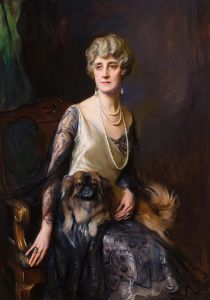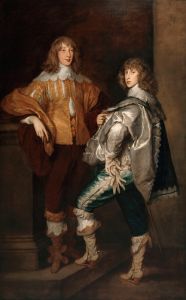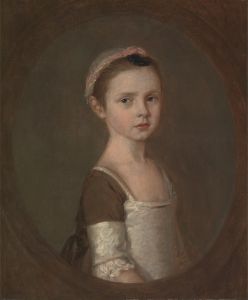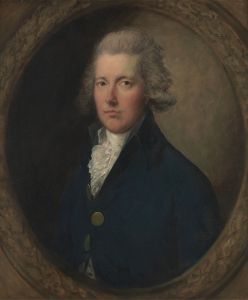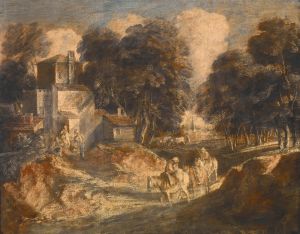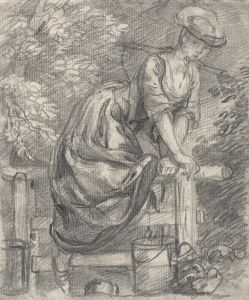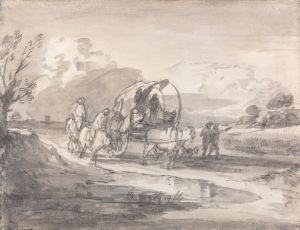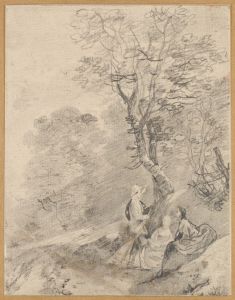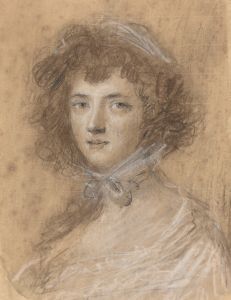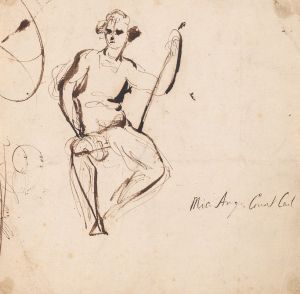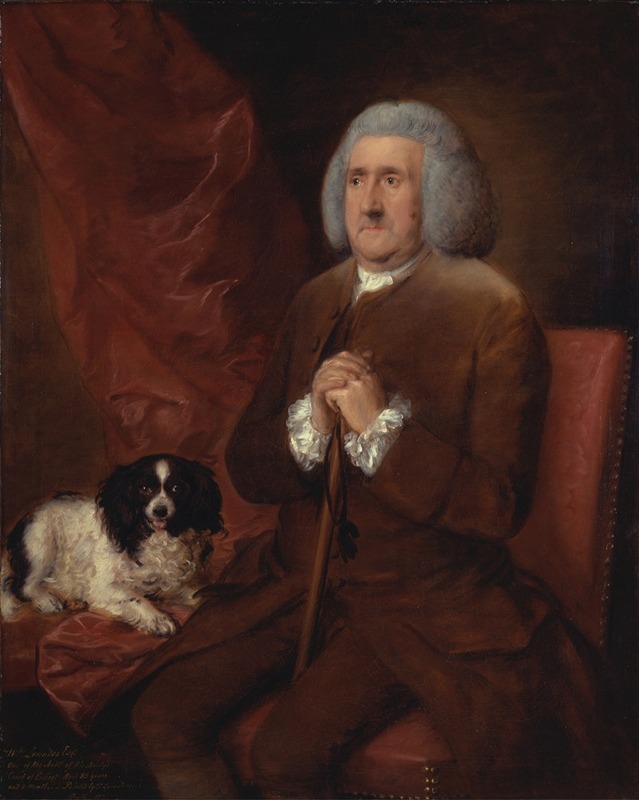
William Lowndes, Auditor of His Majesty’s Court of Exchequer
A hand-painted replica of Thomas Gainsborough’s masterpiece William Lowndes, Auditor of His Majesty’s Court of Exchequer, meticulously crafted by professional artists to capture the true essence of the original. Each piece is created with museum-quality canvas and rare mineral pigments, carefully painted by experienced artists with delicate brushstrokes and rich, layered colors to perfectly recreate the texture of the original artwork. Unlike machine-printed reproductions, this hand-painted version brings the painting to life, infused with the artist’s emotions and skill in every stroke. Whether for personal collection or home decoration, it instantly elevates the artistic atmosphere of any space.
Thomas Gainsborough, one of the most prominent British portrait and landscape painters of the 18th century, is renowned for his ability to capture the character and elegance of his subjects. Among his numerous works is the portrait of William Lowndes, who served as the Auditor of His Majesty’s Court of Exchequer. This painting exemplifies Gainsborough's skill in portraiture, showcasing his distinctive style and the subtleties of his technique.
William Lowndes was a significant figure in the British financial administration during the 18th century. As the Auditor of the Court of Exchequer, Lowndes held a crucial role in overseeing the financial matters of the kingdom. The Court of Exchequer was responsible for managing the royal revenues and expenditures, making Lowndes' position vital for the economic stability of the nation. His responsibilities would have included auditing accounts and ensuring the proper collection and disbursement of funds.
Gainsborough's portrait of Lowndes captures the dignity and authority associated with his position. The painting is believed to have been completed in the latter part of Gainsborough's career, a period during which he focused extensively on portraiture. Gainsborough's portraits are characterized by their fluid brushwork, delicate use of color, and the ability to convey the personality and status of the sitter. In the portrait of Lowndes, Gainsborough employs these techniques to present a figure of composure and refinement.
The composition of the portrait is typical of Gainsborough's style, with a focus on the sitter's face and upper body. The background is often kept simple, allowing the viewer's attention to remain on the subject. Gainsborough was known for his ability to depict the textures of clothing and the subtleties of light and shadow, which are evident in the rendering of Lowndes' attire. The clothing and setting reflect the fashion and decorum of the period, providing insight into the social and cultural context of 18th-century Britain.
Gainsborough's work was highly sought after by the British elite, and his portraits were considered a status symbol among the upper classes. His ability to capture the essence of his subjects made him a favorite among patrons, and his works were often displayed in prominent locations. The portrait of William Lowndes would have been no exception, serving as a testament to Lowndes' position and influence within the British government.
While specific details about the commission and the current location of the portrait are not widely documented, Gainsborough's reputation as a master portraitist ensures that his works are preserved and studied in various art collections and institutions. His contributions to the art world continue to be celebrated, and his portraits remain an important part of the cultural heritage of Britain.
In summary, Thomas Gainsborough's portrait of William Lowndes is a fine example of 18th-century British portraiture, reflecting the artist's skill and the social standing of his subject. Through his masterful technique, Gainsborough immortalized figures like Lowndes, providing future generations with a glimpse into the personalities and fashions of his time.






